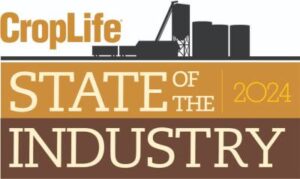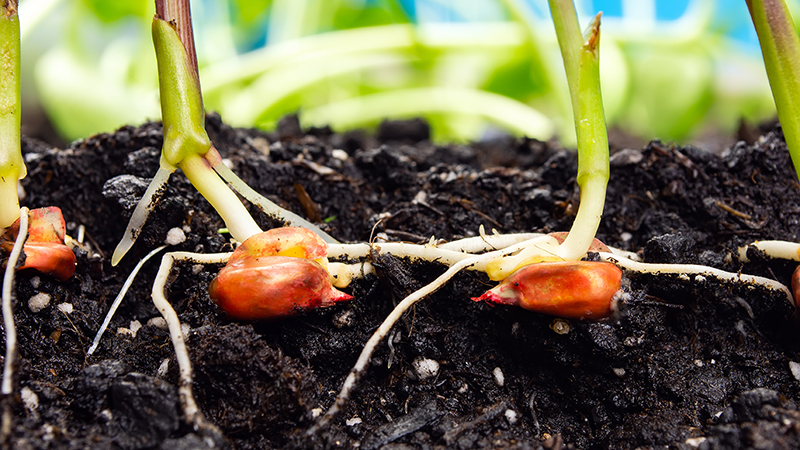Fertilizer Market: The Certainty of Uncertainty Swings Back to Certainty
 Among all crop inputs the past few years, fertilizer has seen the wildest market swings. Luckily, market watchers predict that 2024 could represent a return to some normalcy for the industry.
Among all crop inputs the past few years, fertilizer has seen the wildest market swings. Luckily, market watchers predict that 2024 could represent a return to some normalcy for the industry.
Before looking forward, however, let’s take a glance backward. Once the global pandemic began, the fertilizer market resembled a Newton’s Cradle — one of those multiple metal balls-on-wires structures that owners can bang back and forth on their tables or desks, where the end balls react while the center ones stay stationary. First, supply issues cropped up during 2020 and 2021. This caused prices for all macronutrients to skyrocket. Luckily, commodity prices also stayed high, so ag retailers didn’t see too much pullback on their fertilizer orders during these two growing seasons.
During the 2022 growing season, prices stayed high even as some of the supply issues began to wane. Indeed, most crop nutrients were selling for nearly $1,000 per ton during the year, with some forms of nitrogen easily cracking the $1,500 per ton barrier. This didn’t really hurt overall fertilizer sales among ag retailers, however. In fact, according to the 2022 CropLife 100 survey of the nation’s top ag retailers, fertilizer sales for that year topped a record $23.4 billion. This marked a 53% increase from the 2021 category sales total of $15.3 billion.
Unfortunately, with the sales bar set so high following the 2022 growing season, many market watchers predicted fertilizer would experience some sort of drop-off in 2023.
And it did. According to data collected on the 2023 CropLife 100 survey, the nation’s top ag retailers saw their fertilizer revenues drop off significantly during this past growing season — to $22.4 billion. Even worse, because of this sales decline, the fertilizer category saw its overall market share of all crop inputs/services among CropLife 100 ag retailers fall 3%, down from 51% in 2022 to 48%. This marked an end to a string of market share gains the fertilizer category has managed to chalk up over the past several years.
So, with the “Newton’s Cradle” effect in full swing the past few years, what kind of market will it be for fertilizer in 2024? In four words: A bit more certain.
“Prices are much lower, and the risk of devaluation will help many sleep much better,” George Secor, President/CEO at Sunrise Cooperative, Fremont, OH, told CropLife magazine in September 2023. “The downfall is that interest rates have really surged. We need to make sure we are capturing interest cost or requiring a prepay to make sure we do not erode margins due to higher interest rates eating us up. Our Fertilizer Grain Program looks at fertilizer values and compares those values to December 2024 grain values. This ratio has been well below the five-year average for some time now and has even flirted with the five-year low ratio on certain products. Ratios this low give our customers the confidence to get in gear and commit to buying 2024 fertilizer and selling December 2024 grain.”
The Macronutrients Outlook
Do the experts agree with Secor? For the most part, yes. According to Barry Ward, Director, Extension Income Tax School Program and Leader, Production Business Management at The Ohio State University, fertilizer prices in 2024 should stabilize some, but could become volatile again if certain “black swan events” take place.
“Keep a close eye on natural gas prices during the early part of 2024,” said Ward, speaking at the 2023 Farm Science Review in mid-September 2023. “Nitrogen fertilizer usage globally has fallen in part because 2023 was a mild winter in Europe. This helped build up nitrogen fertilizer stocks from the previous two years. But if the 2024 winter in Europe is worse than in 2023, prices could jump back up really quickly.”
As for phosphorus, the outlook for 2024 is similar to what it was for the 2023 growing season, according to Mark Tully, Market Research Manager at Nutrien. In a speech looking at the phosphate outlook given at the T3 Conference in mid-November 2023, Tully cited USDA’s projections for corn and soybean acreage for 2024 — 91 million for corn, 87 million for soybeans — for why the two growing seasons should have a similar demand curve for phosphorus. Overall, he predicted phosphates demand for North America would be between 4.5 million and 5 million tons.
“Prices have declined for phosphates and there are tight supply chain fundamentals,” said Tully. “But China is the key for the phosphates market in 2024, notably with some tightening supplies worldwide taking place.”
Potash should see a similar growth curve in 2024, said Crystal Carpenter, Market Analysis Manager at The Mosaic Co. “Growers can’t continue to short fertilizer applications without affecting their yields,” said Carpenter, speaking at the 2023 T3 Conference. “Demand for potash should top 10 million metric tons in North America in 2024, up slightly from 2023.”
This echoed comments from another Mosaic representative during late 2023. In a statement released to the press, Joe O’Rourke, the company’s CEO, said that growers had been delaying their fertilizer purchases or applied less during the higher price years of 2021 and 2022. This situation should change for the upcoming growing season, however.
“Around the world, growers are incentivized to maximize yields through appropriate levels of fertilizer application,” wrote O’Rourke. “As a result, demand for our products has rebounded this year, and we expect robust demand through 2024.”






